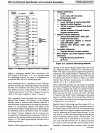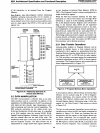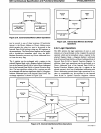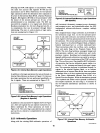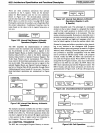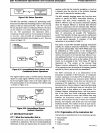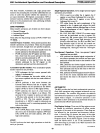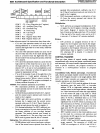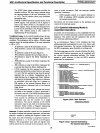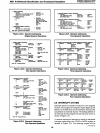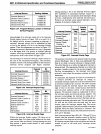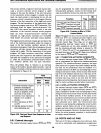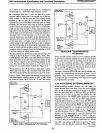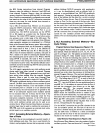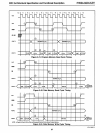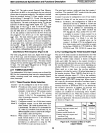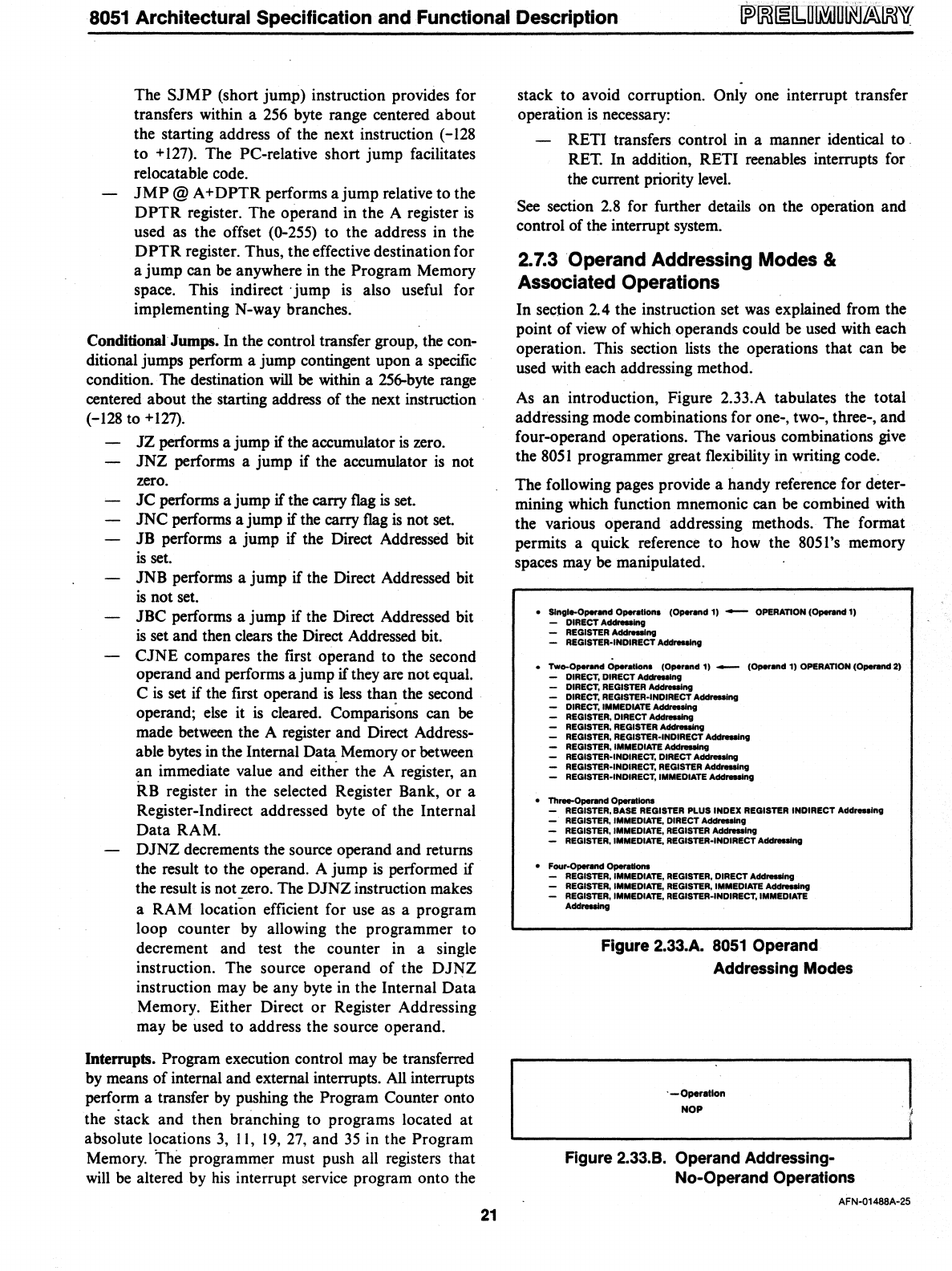
8051
Architectural Specification and Functional Description
The
SJMP
(short jump) instruction provides for
transfers within a
256
byte range centered about
the starting address of the next instruction (-128
to
+
127).
The PC-relative short jump facilitates
relocatable code.
JMP@
A+DPTR
performs
ajump
relative to the
DPTR
register. The operand in the A register
is
used as the offset (0-255) to the address in the
DPTR
register. Thus, the effective destination for
a
jump
can be anywhere in the Program Memory
space. This
indirect'
jump
is
also useful for
implementing N-way branches.
Conditional Jumps. In the control transfer group, the
con-
ditional jumps perform a jump contingent upon a specific
condition. The destination
will
be
within a 256-byte range
centered about the starting address of the next instruction
(-128 to
+127).
JZ
performs a jump
if
the accumulator
is
zero.
JNZ
performs a jump
if
the accumulator
is
not
zero.
JC
performs a jump
if
the carry flag
is
set.
JNC
performs a jump
if
the carry flag
is
not set.
JB performs a jump
if
the Direct Addressed bit
is
set.
JNB performs a jump
if
the Direct Addressed bit
is
not set.
JBC performs a jump
if
the Direct Addressed bit
is
set and then clears the Direct Addressed bit.
CJNE
compares the first operand to the second
operand and performs a jump
if
they are not equal.
C
is
set
if
the first operand
is
less
than the second
operand;
else
it
is
cleared.
Comparis"ons
can
be
made between the A register and Direct Address-
able bytes
in
the Internal Data Memory
or
between
an immediate value and either the A register, an
RB register in the selected Register Bank, or a
Register-Indirect addressed byte
of
the Internal
Data
RAM.
DJNZ
decrements the source operand and returns
the result to the operand. A jump
is
performed
if
the result
is
not zero. The DJNZ instruction makes
a RAM location efficient for use as a program
loop counter
by
allowing the programmer to
decrement and test the counter in a single
instruction. The source operand
of
the
DJNZ
instruction may be any byte in the Internal
Data
Memory. Either Direct or Register Addressing
may
be
used to address the source operand.
Interrupts. Program execution control may
be
transferred
by
means of internal and external interrupts.
All
interrupts
perform a transfer
by
pushing the Program Counter onto
the
stack and then branching to programs located at
absolute locations
3,
II,
19,
27,
and
35
in the Program
Memory.
The
programmer must push all registers that
will
be
altered by
his
interrupt service program onto the
21
stack to avoid corruption. Only one interrupt transfer
operation
is
necessary:
RETI transfers control in a manner identical to '
RET. In addition, RET! reenables interrupts for
the current priority
level.
See section
2.8
for further details on the operation and
control of the interrupt system.
2.
7.3
Operand Addressing Modes &
Associated Operations
In section 2.4 the instruction set was explained from the
point
of
view
of
which operands could be used with each
operation. This section lists the operations that can be
used with each addressing method.
As
an
introduction, Figure 2.33.A tabulates the total
addressing mode combinations for one-, two-, three-, and
four-operand operations. The various combinations give
the
8051
programmer great flexibility in writing code.
The following pages provide a handy reference for
deter-
mining which function mnemonic can be combined with
the various operand addressing methods. The format
permits a quick reference to how the 8051's memory
spaces may be manipulated.
•
SIngte.O_d
O_allon.
(O_d
1) - OPERATION
(Operud
1)
-
DIRECTA_g
- REGISTER AddntooIng
- REGISTER-INDIRECT
Ad_1ng
• Tw ....
O_
...
d
Operallon.
(Operand 1) _ (Operand
11
OPERATION (Ope<and 2)
-
DIRECT,
DIRECT
A_lng
DIRECT,
REGISTER Addreoolng
DIRECT.
REGISTER-INDIRECT Addreoolng
DIRECT,
IMMEDIATE
A_V
REGISTER, DIRECT
A_g
REGISTER, REGISTER
Add_g
REGISTER, REGISTER-INDIRECT
A-.ng
REGISTER,
IMMEDIATE
Add_g
REGISTER-INDIRECT, DIRECT
Addreulng
REGISTER-INDIRECT, REGISTER
Add.-ng
REGISTER-INDIRECT,
IMMEDIATE
Add
.....
1ng
• Th ...... Ope<and Opendlona
- REGISTER, BASE REGISTER PLUS
INDEX
REGISTER INDIRECT Addr
..
slng
- REGISTER,
IMMEDIATE,
DIRECT Addreoolng
- REGISTER,
IMMEDIATE,
REGISTER
Ad_lng
- REGISTER.
IMMEDIATE,
REGISTER-INDIRECT
A_g
• Four-Operand
OperatIons
- REGISTER,
IMMEDIATE,
REGISTER, DIRECT Addreoolng
- REGISTER,
IMMEDIATE,
REGISTER.
IMMEDIATE
Ad_ng
- REGISTER,
IMMEDIATE,
REGISTER-INDIRECT,
IMMEDIATE
Addreoolng
Figure 2.33.A.
8051
Operand
Addressing Modes
'-OperaHon
NOP
Figure 2.33.B. Operand Addressing-
No-Operand Operations
AFN-01488A-25



